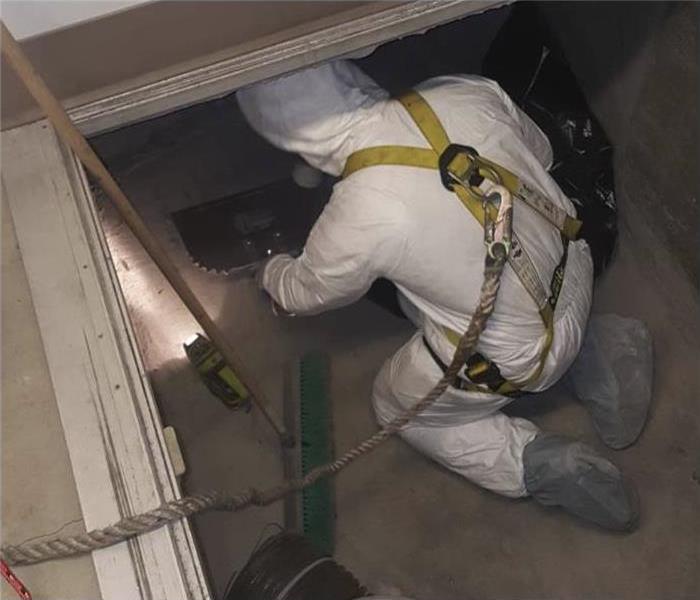Secondary Damage Could Be Worse Than the Initial Cause
3/7/2022 (Permalink)
How To Avoid Secondary Damage In Your Building
When one domino fall, it creates a chain reaction, knocking over more. Water intrusion is quite similar to the childhood game. When commercial owners don’t notice it immediately or fail to fix elements of primary breaks, the lingering humidity could lead to secondary complications such as structural deterioration or black mold. The effects of water are severe and costly. Property owners in Chinatown, MA, should understand why it’s concerning and how to avoid it.
1. Lack of Attention Leads to Mold
While fungal spores are always around, these little decomposers become a significant problem for owners when interacting with water. The fluid feeds the microbes, encouraging reproduction. Water exposure, then, is serious business, acting as the trigger. The following conditions demand attention:
- Plumbing leaks or drips
- High humidity levels
- Damp, dark cabinets or closets
- Flooding
- Lingering puddles
Tend to these situations right away to stop secondary trouble from starting.
2. Secondary Issues May Appear First
Sometimes dampness hides, only evident after the moisture penetrates through materials. Early signs of black mold include peeling paint, warped flooring and musty smells. You may also observe unusual stains or spots.
A leak may have started within the crawl space, indiscernible until now. In this case, call in a mold remediation company to investigate. The primary cause should be fixed first. Then, tackle the cleanup.
3. Focus on Drying and Gutting
Fixing secondary damage is a timely process, requiring patience and thoroughness. If not methodically handled, the premises may experience future complications. Extract as much moisture as possible. Use a moisture reader to understand to monitor dampness. Run industrial dehumidifiers around the clock to pull out the humidity from walls, floors, the air and objects.
Also, pull out porous items that have become drenched. These are likely to contaminate the room more, and they cannot be thoroughly cleaned. Perform flood cuts on the drywall, taking out a few feet above the waterline. Toss impacted carpeting and soaked valuables.
Excess water could encourage black mold growth. To safeguard a commercial property from these secondary harms, seek professional help as soon as possible and concentrate on decreasing wetness.






 24/7 Emergency Service
24/7 Emergency Service
